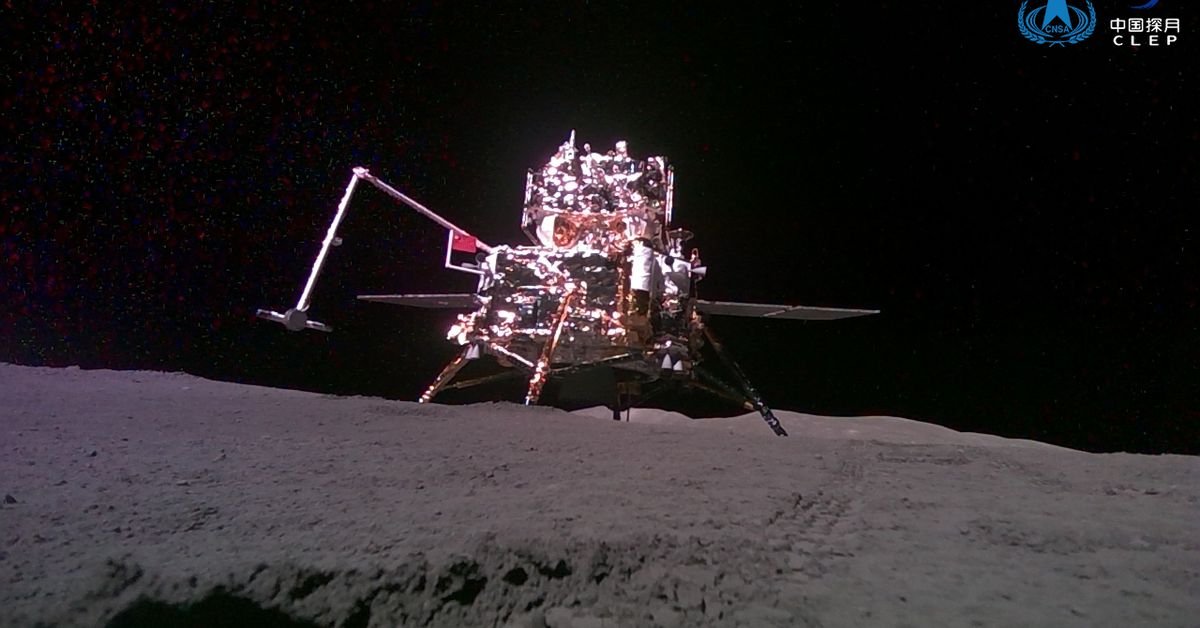[ad_1]
China’s Chang’e 6 spacecraft lifted off from the lunar surface today, bringing with it the first samples taken from the far side of the Moon.
Chang’e 6’s ascender launched from the back of the Moon, the side facing away from Earth, at 7:38AM Beijing time. The spacecraft had landed there, at the South Pole–Aitken Basin, around two days earlier. Its lander carried cameras, a soil structure detector, and a mineral spectrometer for analyzing geologic samples. The probe used its robotic arm and drilling tools to take samples. Chang’e 6 also carried payloads from the European Space Agency, France, and Italy for “scientific exploration.”
Governments want to know if they can use lunar minerals to set up bases on the Moon to facilitate long-term missions, Reuters reports. The samples collected are also expected to help researchers better understand how the Solar System and Moon formed roughly 4.5 billion years ago and how its far side differs from the side we see from Earth.
It’s a lot harder to get to the Moon’s far side, which is bumpier. The Moon itself also blocks radio signals to the far side, which made it more difficult to collect samples there. China’s Chang’e 4 became the first spacecraft to successfully make it to the Moon’s far side when it landed in 2019. It launched a lunar satellite the year prior to facilitate communication between Earth and rovers on the far side of the Moon.
A second lunar satellite, Queqiao-2, that launched earlier this year sent data from the probe back to scientists, allowing them to make sampling decisions from Earth. That satellite also played a crucial role in the Chang’e 6’s ascender launching today. It lacks a fixed launch tower and ground control support. Instead, Chang’e 6 used its lander as a temporary tower and relied on its own sensors and the Queqiao-2 satellite to autonomously position itself before launch.
The Chang’e 6 ascender is supposed to rendezvous with a separate spacecraft in lunar orbit and then wait for the best time to return to Earth at a landing site in Inner Mongolia.
[ad_2]
Source link





